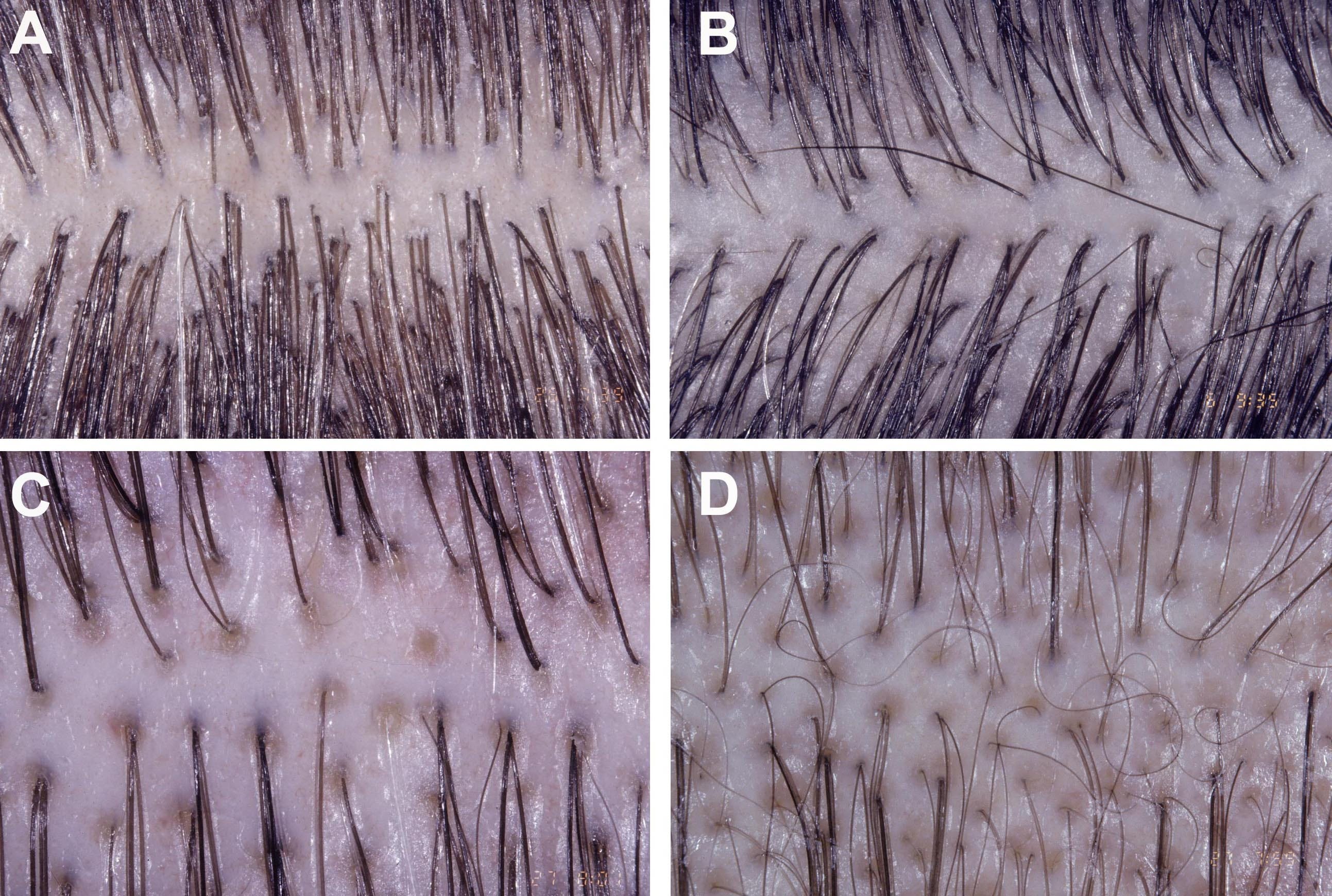L’Oréal’s research into hair loss has shed light on this phenomenon.
Exogenous, dietary or seasonal factors, genetic, hormonal and certain growth factors are all directly implicated in the hair cycle. They contribute to the process of hair loss, or the phenomenon of hair loss, of which baldness is the ultimate stage. Frequently observed in men, this process is very slow and its development is difficult to follow.
Hamilton’s diagrams

In 1951, Dr James Hamilton established a classification of the different stages of hair loss that is still widely used today and is the standard reference. Moreover, numerous methods have been developed to quantify the alopecia process. These include the phototrichogram, techniques for weighing the hair and the microscopic study of hair follicles. However, these assessment techniques are difficult to use for the study of large samples of the population.
L’Oréal’s research into hair loss
The L’Oréal laboratories have developed a rapid reproducible method of observing the scalp and hair of a number of men (SU.VI.MAX study) in order to develop an effective tool for predicting hair loss.
Macrophotographs of the scalp of the top of the head of 731 volunteers were taken using a standardised system of two lenses which observed the following parameters : hair density, hair diameter, variation in these diameters as well as peripilar signs. The latter are characterised by modifications in appearance of the scalp at the base of the hair shaft.
The observations show that the frequency of variation in diameter and peripilar signs that can be seen from the early stages increase with the stage of alopecia. Statistical analysis of the results obtained from the clinical monitoring of 731 men at different times of study (T0/T2 years/T5 years) has established that the presence of one of these parameters (and a fortiori their association) represents a risk for a decrease in hair density.
The observation of the variation in diameter at early stages of alopecia therefore offers one of the best means of predicting the development of alopecia.
Furthermore, a study carried out in collaboration with A. Tosti’s team (Bologna, Italy) has shown that progressive miniaturisation of the hair follicle is responsible for the variation in diameter. The presence of peripilar signs is associated with perifollicular infiltrates and a decrease in the thickness of the epidermis observed during alopecia. These preliminary results show that, behind the clinical signs observed, delicate biological mechanisms are hidden which remain to be elucidated.

B: macrophotograph of a healthy scalp showing variation of hair diameter
C: macrophotograph of a scalp showing peripilar signs
D: macrophotograph of a scalp associating the two parameters (variation in diameter and peripilar signs)
Source: medium.com


